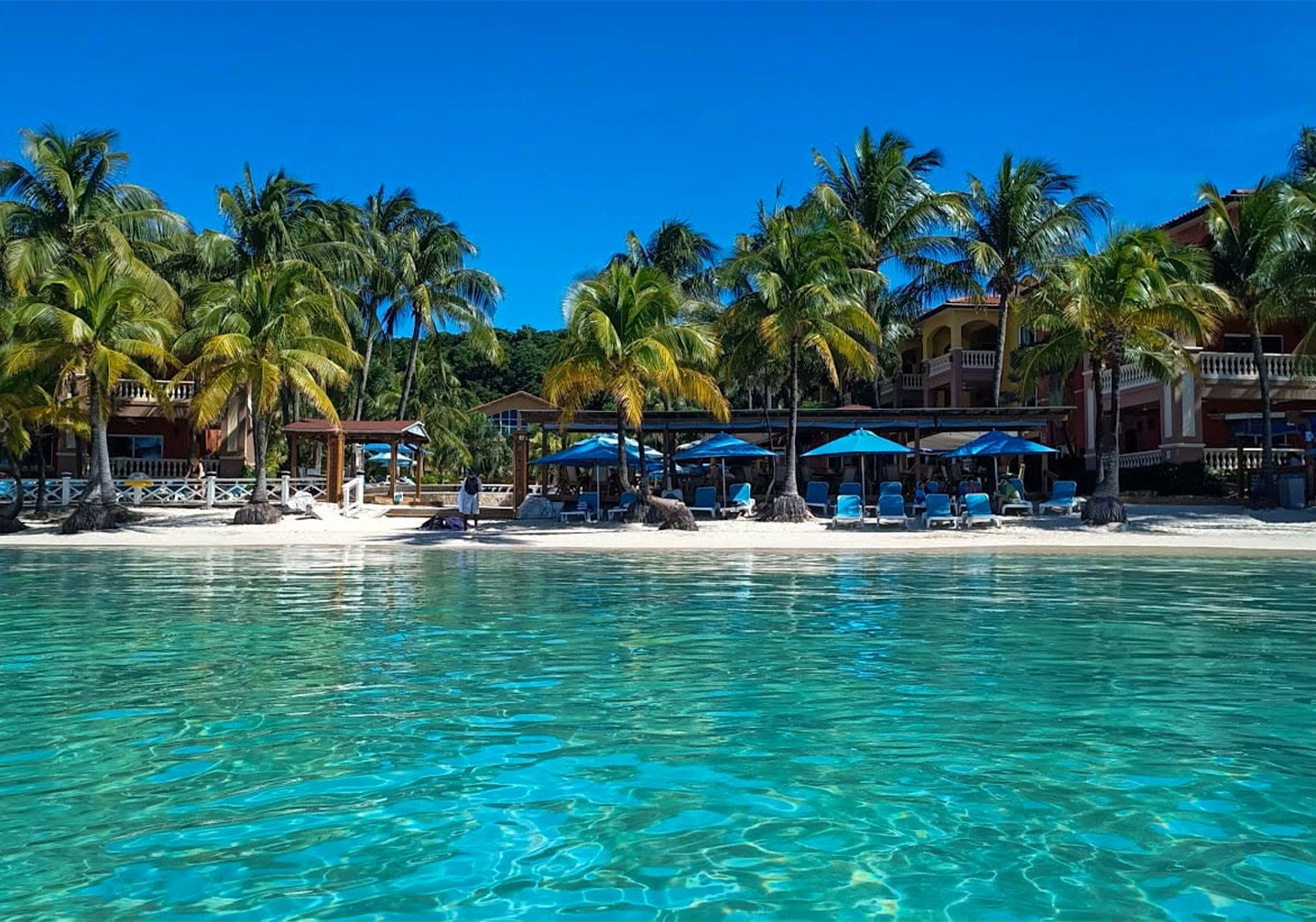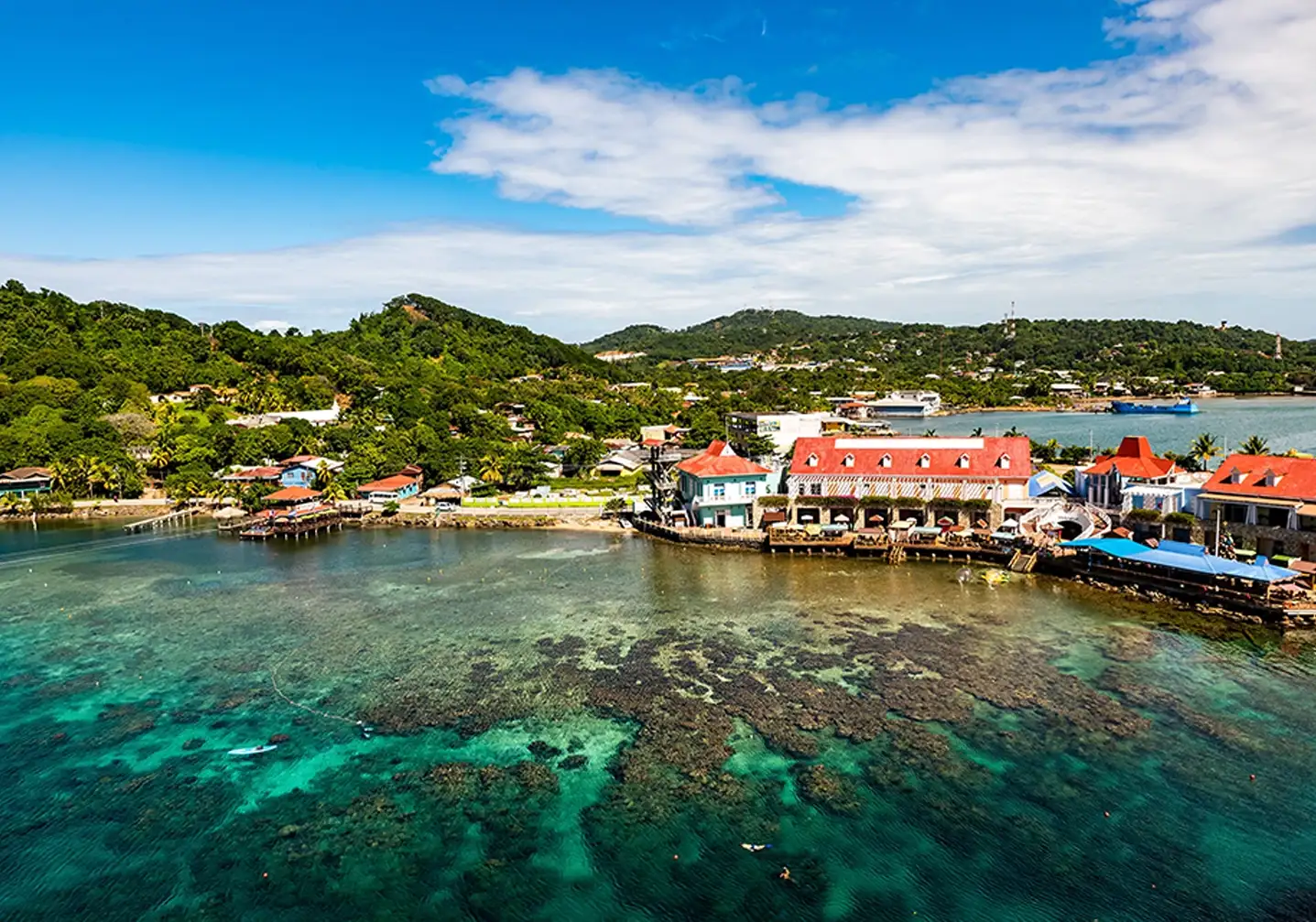

Looking for a Caribbean dream? Then you've come to the island of Roatán, located between the islands of Utila and Guanaja, which is one of the largest islands in Honduras. It is approximately 77 km long and reaches 8 km at its widest point.
The island is located off the Mesoamerican Barrier Reef, the second largest coral reef in the world and the largest in the Caribbean. That's why Roatán has become a mecca for divers, ocean liners and nature lovers. Tourism is the most important industry here, although fishing is also an important source of income for the islanders. The mainland, La Ceiba, about 65 km away, can be reached by boat from the main port or by air from the international airport near the capital. On the mainland in Honduras, the number one language is Spanish, which is also the official language. English is also spoken very well, especially in the western and central parts of the island.

Roatán is famous for its coral reefs, which are the second largest in the world after Australia's. Thanks to this, diving and snorkelling offers a beautiful view of an underwater world full of tropical fish, turtles or seahorses. There are also dolphins and beautiful whale sharks around the island. For diving with sharks and also for stingrays, the most common place to go is the adjacent Pigeon Island a reference to the island's location where the nature is also pristine. Hundreds of thousands of tourists visit Roatán every year. Visitors especially admire the laid-back lifestyle, the beautiful sea, the pleasant climate, the Copán (Mayan monuments in Honduras) and buy their own homes here, making the real estate market boom. The economy in Roatán is growing year by year.
The centre and capital of the island is clearly Coxen Hole, located in the southwest of the island. Here you will find the airport and 2 large ocean liner ports. On the eastern side of the island it is separated by a 15 m wide river channel with protected mangroves. This part is called Helene (Santa Elena in Spanish). Coxen Hole (Capital) is the largest town on Roatán. The airport, all offices and the dock for ocean-going ships are located here. Near the airport there are many supermarkets where there is a huge selection of food. The streets in the centre are very narrow and very often the town is full of honking cars with locals running between them. Nightlife fans should not miss this city with its many bars and pubs in the West Bay and West End areas.


The currency on the island is Lempira. You can pay everywhere but also in US dollars. 1 dollar is equivalent to approximately 24.5 Lempiras. If you want a good exchange rate, it's a good idea to pay in dollars at the big supermarkets and get change in Lempiras. Banks also offer a fairly decent exchange rate. There are also many ATMs on the western part of the island from which you can withdraw a maximum of 5,000 Lempiras or $200 at a time.
Medical services are provided by modern private clinics and a large new hospital is being built with care comparable to European or US experience.
For long-term or permanent residence, your children can attend private Montessori nurseries and schools, or local education is available. All can be found in the west of the island.
A rental car or motorcycle is essential on the island. Alternatively, you can use a taxi, which is more expensive for English-speaking tourists.
Electricity on the island is 120 V and 60 Hz, and the outlets are the same as in the USA. It is recommended that you use adapters that equalize the voltage so that you do not damage your electrical equipment with prolonged use. Occasionally the power goes out, especially during the rainy season. Restoration usually takes between a few minutes and hours. Most of the island has no drinking water running from the taps, except in resorts with drinking water boreholes. There is a huge supply of potable water under the island. Drinking water can be bought in plastic bottles at the supermarket, large barrels are supplied by Sun for a few tens of Lempiras.
West Bay is clearly one of the centres of diving, but you can get underwater in almost every part of the island. Divers are very appreciative of the diversity of the seabed.
The island is also home to hummingbirds, parrots, monkeys, iguanas and dolphins.
Roatán has a tropical climate with temperatures around 28 degrees and the ocean temperature is also around 28 degrees Celsius, ensuring a year-round season. Sports and adrenaline enthusiasts can go kayaking, snorkeling, diving for dolphins (Dolphins), fishing, Zipline, golf on three courses, visit fitness centers or go cycling in Roatán. Swimmers will enjoy a local rum shop, two local chocolate shops, a brewery (including Czech beer, which doesn't taste like Czech beer 😊) built by Czechs.
Punta Gorda is the largest settlement with people who call themselves the Garifuna People. They have roots in Africa and maintain their culture and way of life. On Sundays they play drums, dance and speak a special Garifuna language.


You can buy all the food you are used to in Europe or the USA on the island at Eldon's supermarkets or grocery stores. You can also buy local fruit and vegetables cheaply on the street from locals who have better quality than the supermarket. If you can adapt to the local market and cook mainly with local food, you will not only be healthy, but you will also save money. Frying and grilling are popular ways to prepare food. Rice, beans and bean paste are popular side dishes.
Restaurants on the island offer a huge variety of cuisines, from traditional local dishes, Mexican cuisine, Italian and French specialties, Argentinian steaks, Japanese sushi to Thai and Chinese cuisine. Prices start from $8 per meal. You can eat at the local community for lower prices, provided you make friends. Most of the good restaurants are located in the West End and on West Bay Beach. As the island develops, the dining scene improves to the east.
Alcohol is very popular in Roatán. In shops and restaurants you can find a wide range of beers from local to imported. Prices in shops range from 20 Lempiras for a third of a beer, in pubs around 50 - 100 Lempiras, and in luxury restaurants 200 Lempiras or more. As for wine, it is mainly imported from Chile. You can buy a bottle of wine in a shop from 120 Lempiras. In a restaurant, a glass of wine is usually two or three times more expensive than a bottle of beer. But the most popular is the local rum, which you can buy from 120 Lempiras per bottle. Cocktails made with rum cost from 150 Lempiras. If you "catch" the so-called Happy Hours, you can have two drinks for the price of one and similar specials. The local specialty, however, is Rum Punch, which some translate as rum punch, others as rum fist. It consists of several types of rum, in a ratio of ½ rum and ½ juice.
If you're a lover of unspoilt nature, unique flora and fauna, great cocktails and water activities, you've come to the right place in the Caribbean.